We may earn money or products from the companies mentioned in this post. This means if you click on the link and purchase the item, I will receive a small commission at no extra cost to you ... you're just helping re-supply our family's travel fund.
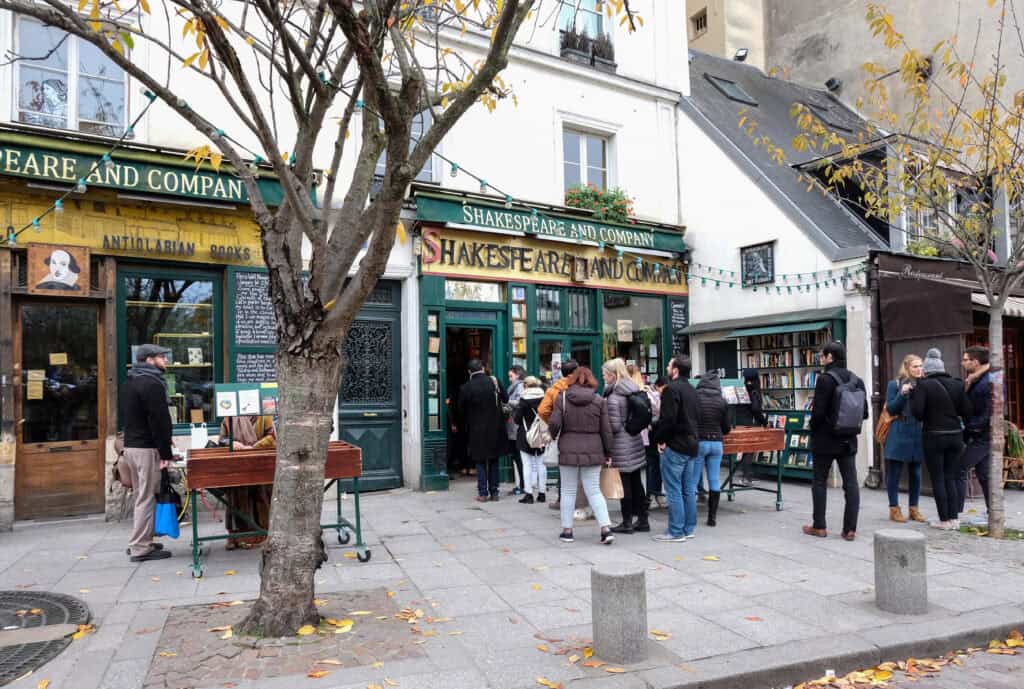
Literary pilgrimages promise quiet aisles, paper dust, and a staff pick that feels like fate. Reality often meets phones held high, timed entry lines, and souvenir corners priced like museums. These famous shops still stock good books and hire passionate staff, yet the balance tilts toward spectacle. Visitors arrive for staircase photos, ceiling shots, and bragging rights. Locals time their errands with care. What follows offers context for places where commerce, culture, and crowds now share the same narrow floor.
Shakespeare and Company, Paris
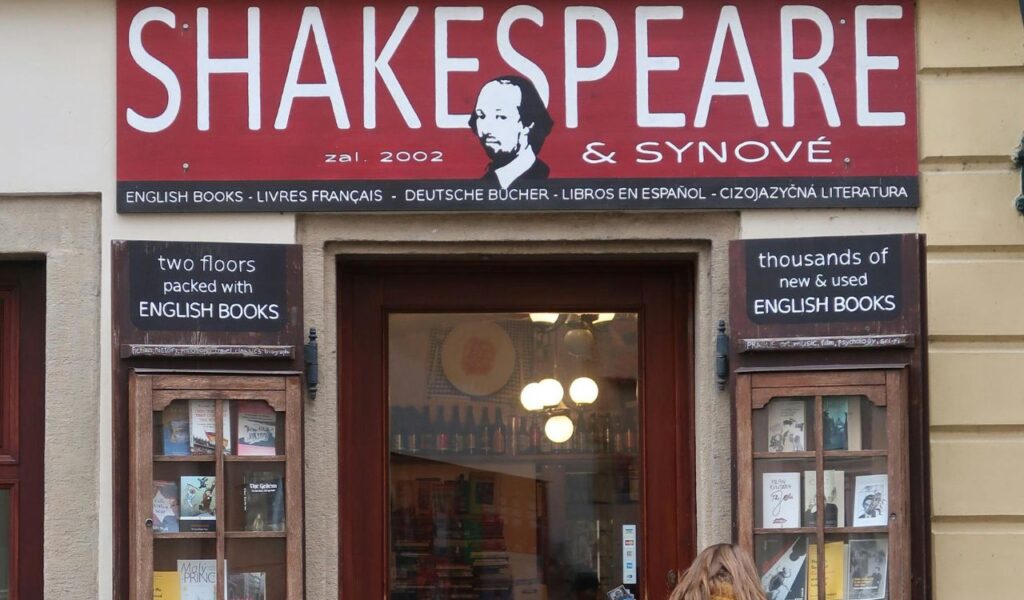
On the Seine, this small landmark grew from haven to high traffic rite of passage. Lines form before doors open. Inside, bodies drift room to room while staff manage a steady murmur of cameras and whispers. The upstairs nooks still cradle readers, though moments of quiet arrive in brief pockets between tours. The stamped receipt and tote signal arrival as much as any classic pulled from the shelf. It remains tender, only louder, and best met with patience and low expectations for solitude.
Livraria Lello, Porto

Gothic arches, stained glass, and a red staircase turned this shop into a stage. Tickets and time slots keep order, yet the main floor pulses with visitors orbiting the stairs before landing on a title. Local literature hides in plain sight behind tripods and soft shoe traffic. Staff steer the flow with practiced calm, nudging browsers toward real discovery. The space still rewards a longer pause, but the first impression belongs to spectacle. Books compete with architecture and often lose the opening round.
El Ateneo Grand Splendid, Buenos Aires
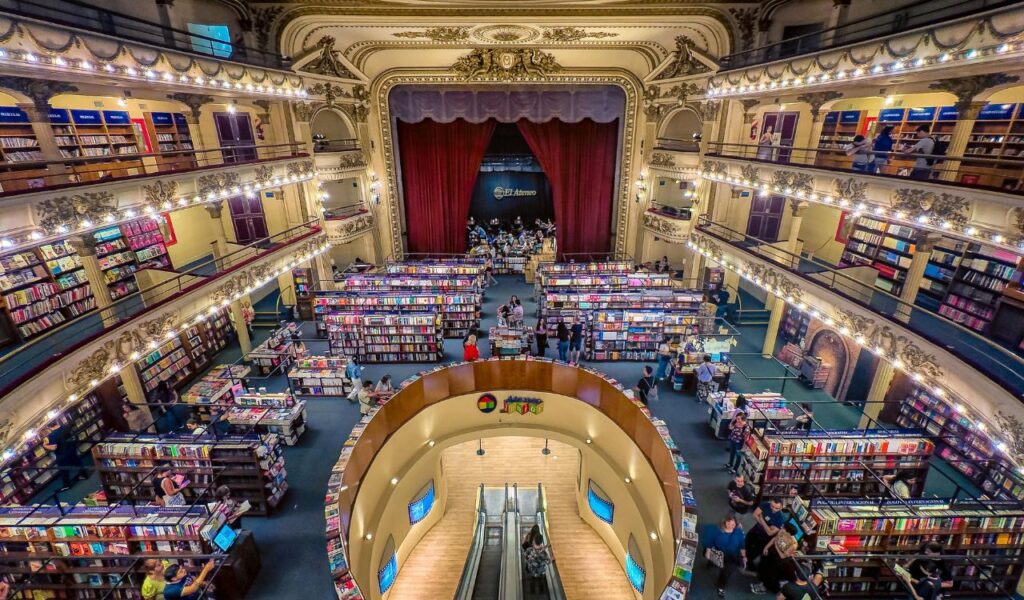
A theater reborn as a bookstore delivers awe on entry. Balconies, boxes, and a café on stage make lingering feel inevitable. The selection stretches wide, yet ground level often works like a promenade of selfies and slow circles. Locals head for upper tiers to browse in relative peace, trusting the staff to guide them past the crowd. Reverence and noise share the same air, a reminder that beauty draws bodies and bodies reshape how a quiet craft like reading is publicly performed.
The Strand, New York City
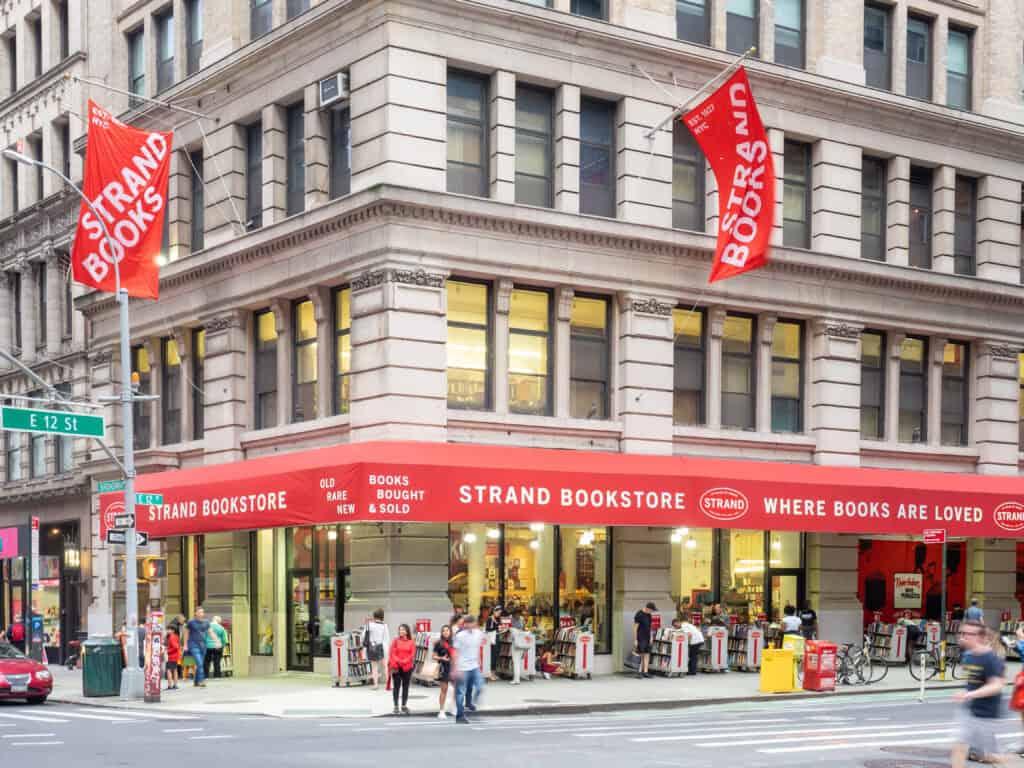
Eighteen miles of books translates into aisles where elbows learn new skills. Street stalls, main floor tables, and that wall of totes run at full clip most weekends. Staff picks remain sharp, and rare rooms upstairs still reward hunters willing to climb. The tension is tempo. Discovery happens between rolling suitcases and landmark tours, then settles into a hard won calm over a stack. The store serves neighborhood readers and bucket list traffic at once, pleasing each imperfectly and persevering anyway.
Powell’s City of Books, Portland
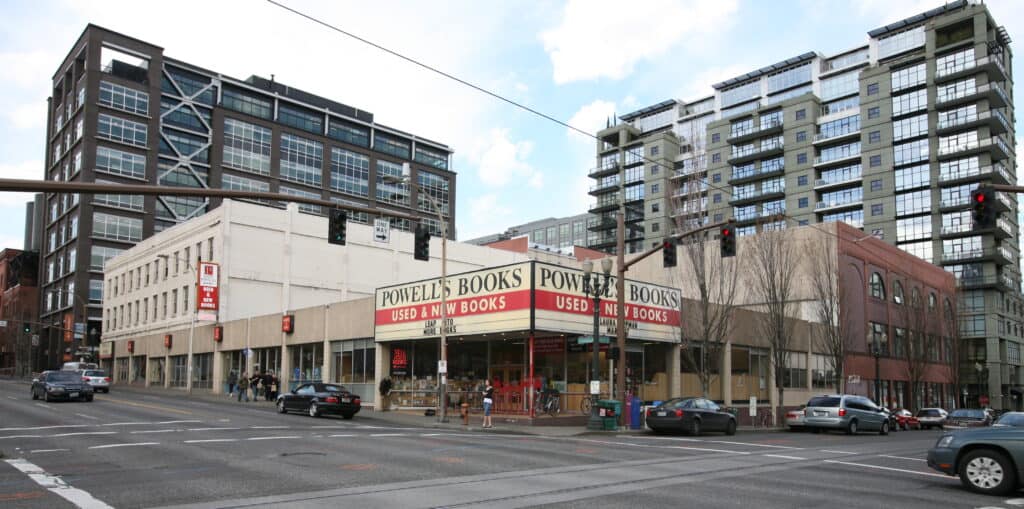
Powell’s sprawls across color coded rooms that invite wandering until closing time. Event boards, merch islands, and café lines now carry the same gravity as small press tables and zines. Midday crowds move like a convention, yet staff keep a human thread through recommendations and quick rescues of lost patrons. Locals aim for early mornings or late evenings when the building feels like a civic library with better curation. The magic endures, only filtered through headcounts large enough to humble arenas.
The Last Bookstore, Los Angeles

Vaults, tunnels, and art installations transformed this store into a set as much as a shop. The book arch upstairs funnels visitors into patient queues, while downstairs blends used stacks, vinyl bins, and a steady hum of content capture. Between back rooms, staff still place strange finds into grateful hands. The place scratches two itches at once. Be seen inside a myth. Leave with a battered paperback that cost less than parking. The performance and the purchase coexist, not always gracefully.
Daunt Books, Marylebone, London
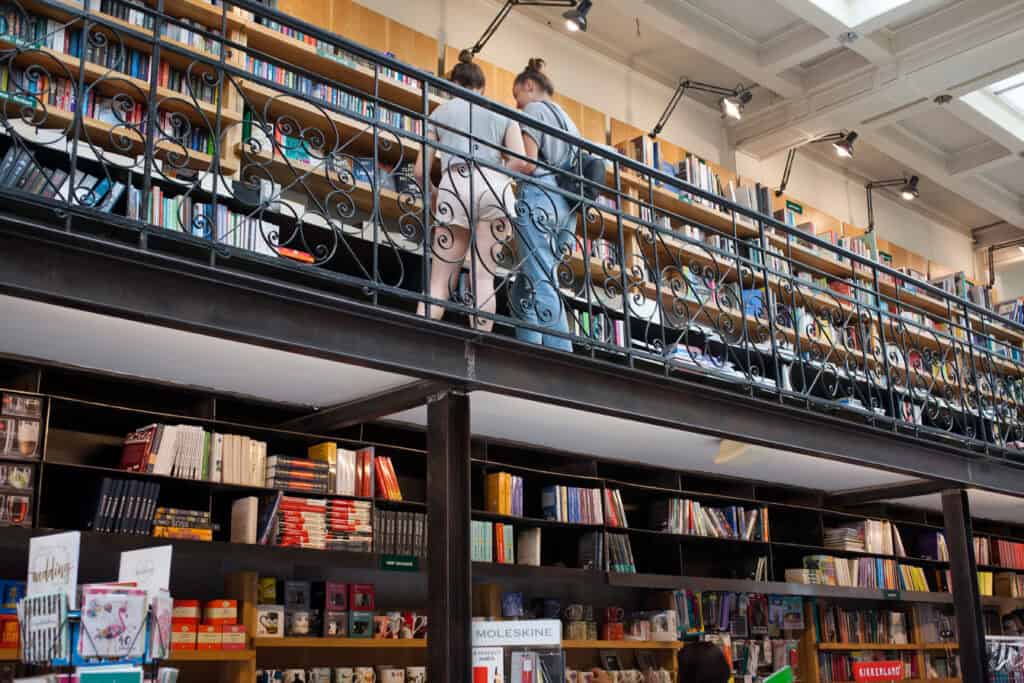
Oak galleries and orderly travel tables cast an Edwardian calm that crowds test daily. Midday brings tour whispers and brisk gift buying that press against the store’s gentler intentions. Still, the curation holds the center. Slim novels, essays, and regional guides sit with quiet authority, inviting slow fingers and longer thoughts. Beauty draws bodies, and bodies turn browsing into choreography. Those who arrive near opening find the old hush intact, when wood, light, and maps speak without interruption.
Boekhandel Dominicanen, Maastricht
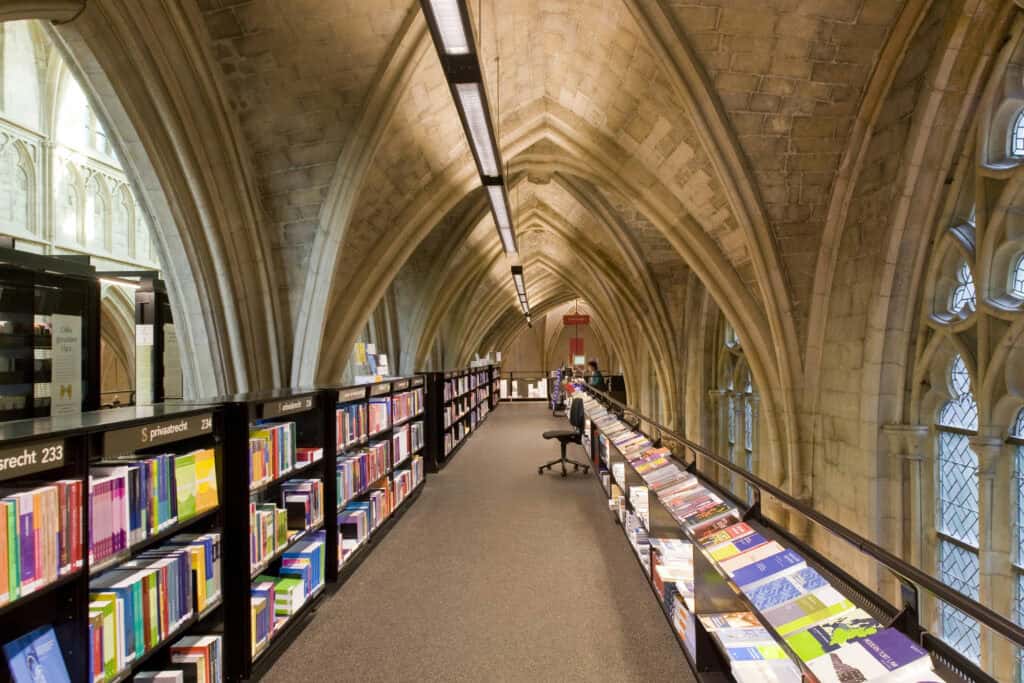
A 13th century church reborn as a bookshop guarantees goosebumps and a flood of lenses. The nave rises around tiered shelves, the choir anchors a café, and the apse frames new titles like relics. Locals weave past study groups and tourists to reach literature and children’s corners that still feel grounded. The store accepts the exchange. Preserve the awe, sell good books, and trust that reverence can survive a crowd. The sacred now includes tap orders and weekend queues, and the stacks endure.